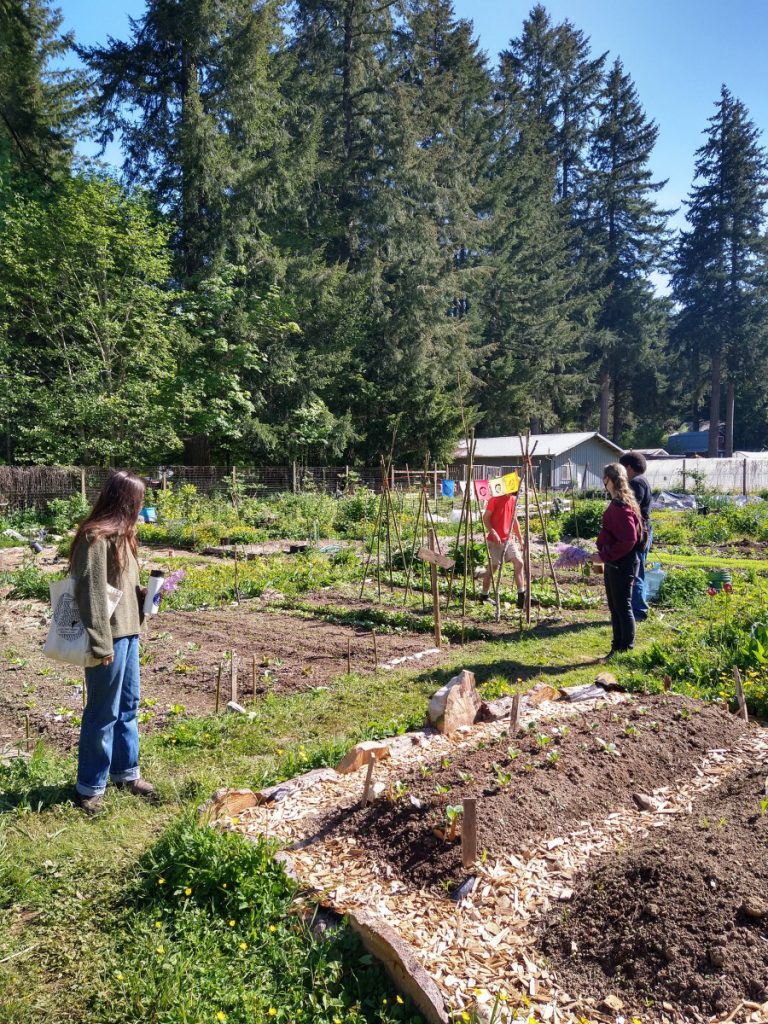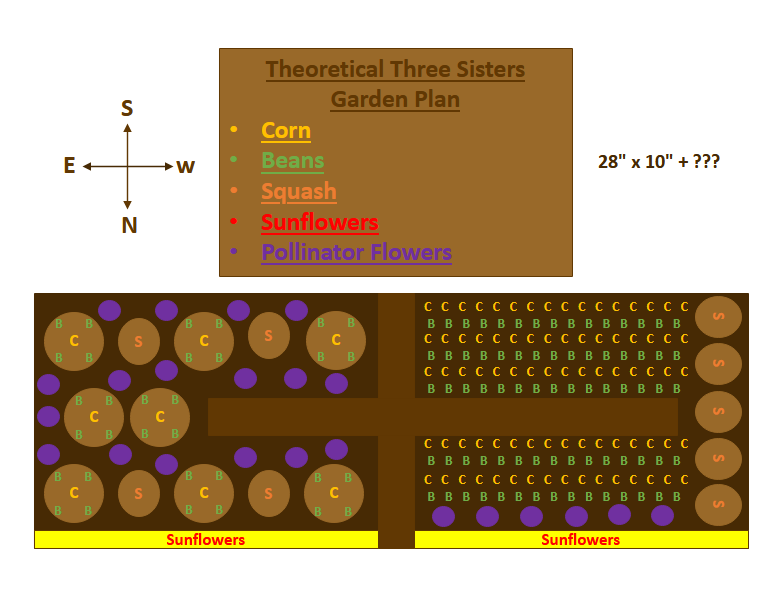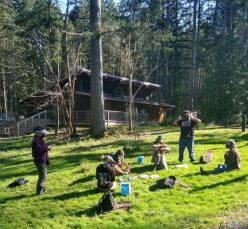Collaborative Community Garden

Photography by Sarah Dyer.
The water is finally back, eliminating the need to fill jugs at the farm office and carry them to the garden! I am so happy that as the weather warms we will have the ability to keep keep our seedling properly hydrated. On the farm we’ve been learning to install both drip and raised irrigation for different crops, so this week I’ve seen watering three ways. Installing drip irrigation may be one of my favorite chores, and repairing the lines is something with which I have some talent.
We spent the day weeding morning glory (bindweed), buttercup, comfrey, and kale. I’m amazed by the tenacity of these weeds; I could only hope to be so resilient. So much kale went to seed last year that it has become a noxious weed in the community garden. All the overwintered brassicas are flowering, creating a jungle of yellow and white flowers in almost every plot. Caleb is planning on holding a work party to clear the overwintered brassicas, and I hope I’ll be able to attend.
We transplanted frisee and collards in the next prepared beds, intercropping the two. I have a special spot in my heart fro collards,, and I can’t wait to harvest a big bunch for a pot of southern-style greens. I can’t wait to try the frisee, as I’ve spent two quarter learning about the wonderful world of chicories.
We discussed organic pest management with special emphasis on how to protect our tender greens from slugs and other pests. Caleb placed crushed oyster shell around our sprouts, which has a few benefits for our garden. The calcium content helps to balance soil pH levels, improves nitrate uptake, aids in enzyme formation, and strengthens plant cell walls. The course texture of crushed oyster shells can help reduce compaction in the soil. When applied at the openings of their tunnels, the sharp shards and gritty texture also works as a deterrent in the soil to keep moles and voles far away from your plants.
Do’patsa Makihi’kě: Four-Vegetables-Mixed
Ashley and I have been hitting the drawing board! As planting time approaches we are eager to finally start cutting paths and building mounds. This plan is theoretical, but a close approximation of our end goal. A cross-path will be cut deep running through the middle from north to south, and halfway through the east side of the bed. The west path will incline up to ground level and extend rather farther than the east path. We decided to cut the paths deep in order to use the soil for our mounds.

Design by Sarah Dyer.
Sunflowers will run along the entire northern border, as not to shade the plot and to protect other plants from the sunflowers allelopathic tendencies. The east side of the bed will blend Wampanoag mounds and Zuni waffle garden designs, with eight corn and bean hills and four squash mounds. In the west side of the plot we will be attempting to model the Hidatsa row method, in which alternating rows of corn and beans are planted with broad rows of squash running through the rows like the checks on plaid fabric. Beneficial herbs and pollinator flowers will be interplanted wherever space allows.
We are still determining the best layout for the west side of the bed for a few reasons. Primarily, we want to be sure the squash is planted in such a way that it fulfills its purpose as shade for the corn and beans. Another concern is is the shade from a nearby tree that covers the entire west side of the plot by 4:30 pm; the area on the far west of the bed only just gets full sun at 6.5 hours, so we are trying to think proactively in terms of planting.
